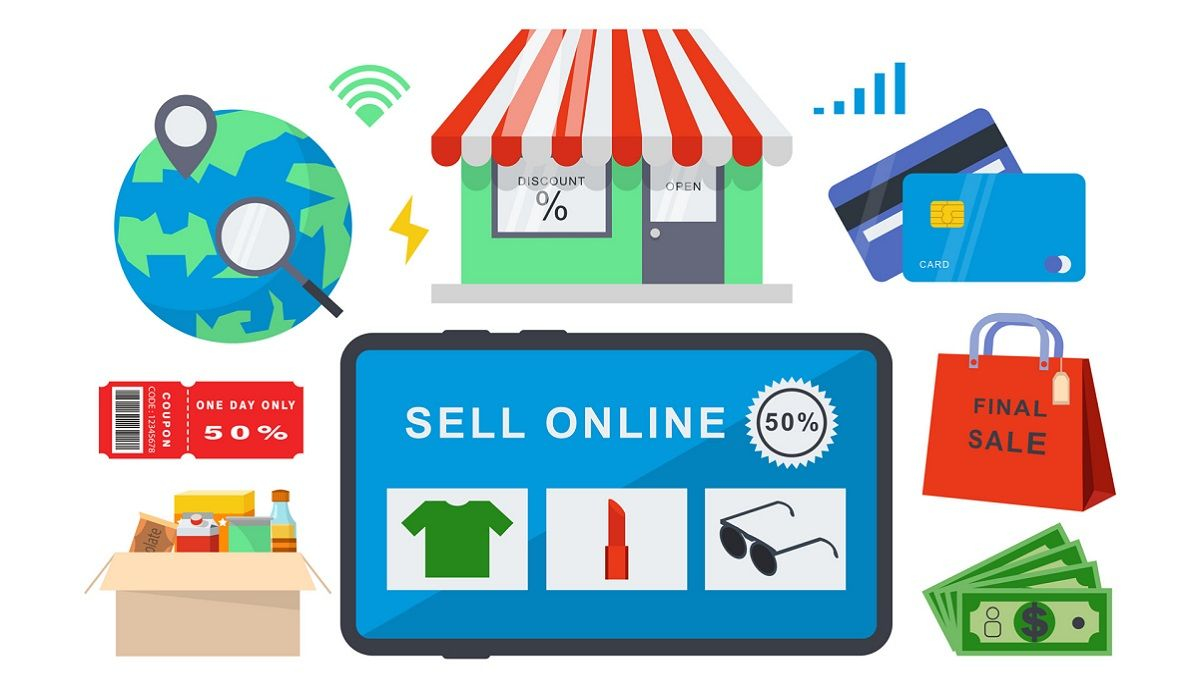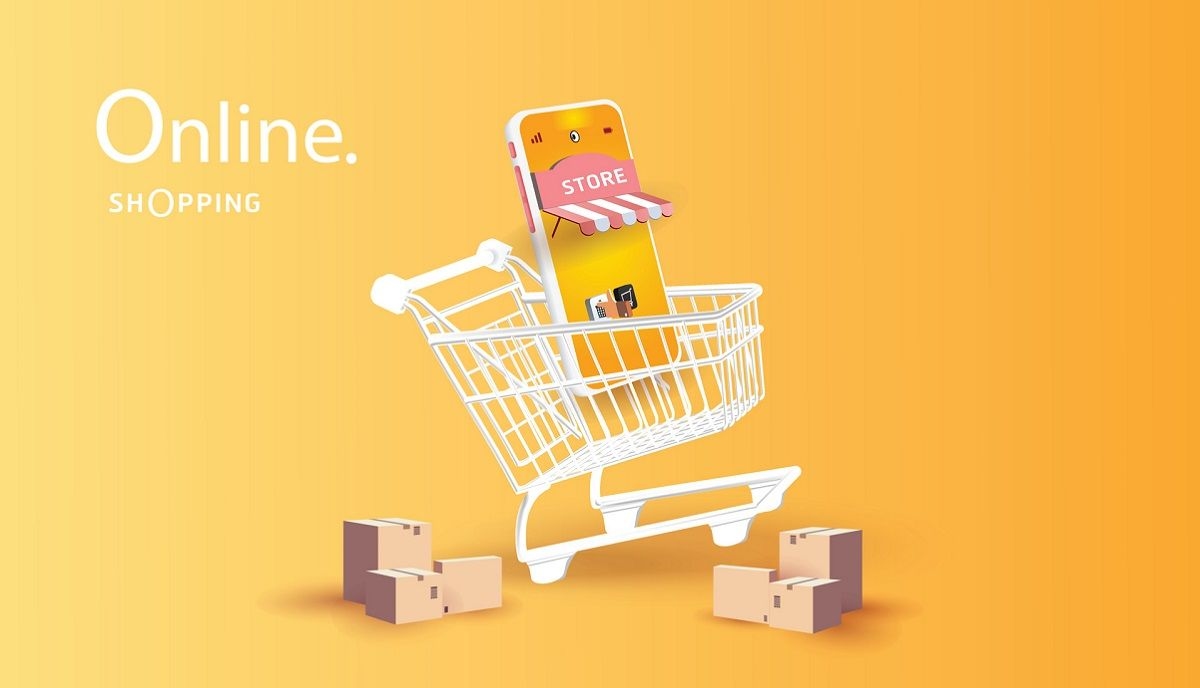Loyalty
How to Start a Shopify Store to Sell Online: Your 2023 Guide to Success
A Shopify online store is a terrific place to start if you want to launch an online business and make some ser...


Weekly newsletter
No spam. Just the latest releases and tips, interesting articles, and exclusive interviews in your inbox every week.
Tags
Featured
Business Growth
Authors
Daniela Andreevska
Daniela has 6 years of experience in digital marketing for ecommerce businesses.
Aws Alnabulsi
Aws is the Co-Founder of Coretava, a complete retail ecommerce growth platform. He has 6+ years of experience in managing and growing ecommerce businesses.
Carlos Guerberoff
Head de Parcerias na Coretava. Especialista em desenvolver e fortalecer relacionamentos estratégicos. Orientado para resultados e apaixonado por construir conexões duradouras.
Henrique Letoldo
Head of Sales na Coretava. Com vasta experiência em liderança de equipes comerciais, busca constantemente impulsionar o crescimento e maximizar resultados. Apaixonado por inovação e estratégias de vendas eficazes.
Aws Alnabulsi
CEO e fundador da Coretava. Visionário e empreendedor apaixonado, lidera a equipe com visão estratégica e inovação, buscando transformar o varejo através de soluções tecnológicas.
A Shopify online store is a terrific place to start if you want to launch an online business and make some serious cash. You can manage your inventory and accept payments all in one place.
With a friendly user interface, the Shopify platform is easy to navigate. And with the quick growth of the ecommerce industry, a Shopify online store helps your business step up in the field.
Here’s our quick guide on how to start a Shopify store and see yourself achieving your short-term and long-term business goals.
Table of Contents
- Why Should You Set Up a Shopify Store? 5 Benefits
- How to Start a Successful Shopify Store in 10 Steps
- How Much Does It Cost to Start a Shopify Store?
- Launching a Shopify Store in 2023
Why Should You Set Up a Shopify Store? 5 Benefits
Before going through the process of how to start a Shopify store, it’s important to establish whether this is at all worth it for business owners.
Without the hassle of having to build an infrastructure or the high development costs associated with self-hosted online trade platforms, Shopify provides a simple way to quickly start an ecommerce store. As a readily available ecommerce platform, creating a Shopify store offers many important benefits.
Here are the main ones:
- User-friendly ecommerce platform: Creating and managing your online store with Shopify is relatively simple and doesn't require much coding knowledge or technological expertise. Even the most inexperienced users may easily personalize their business with the straightforward drag-and-drop interface.
- Plethora of apps and plugins: Shopify provides more than 25.8 million third-party apps for retailers, according to Fundera. These are available in the Shopify app store to help you personalize and improve the functionality of your online store. There is an app for practically everything related to running and growing an ecommerce website, from payment methods and shipping tools to social network integration and email marketing.
- Strong security protocols: Strong security standards and regular uptime make Shopify a market leader in the ecommerce industry, guaranteeing that customers can always access your business and that their information and data is safe and secure. Moreover, the platform handles all backups and security updates. This means that business owners don’t have to worry about this must-have step when setting up a Shopify store.
- Mobile-ready store: Having not only a mobile-integrated but a mobile-first store is essential because virtually everyone uses their phones for shopping. Oberlo reports that currently 1 in 3 people shop on their mobile phones. Ecommerce trends point that this percentage is likely to grow in the coming years. To meet this reality, Shopify offers responsive designs that look equally amazing on all devices as well as an intuitive mobile app that enables you to manage your store from any place in the world.
- 24/7 customer support: Shopify provides email, phone, and live chat help around the clock. As an ecommerce business owner, you can be sure that any problems or inquiries you have will be immediately resolved by the customer support staff.
How to Start a Successful Shopify Store in 10 Steps
Excited to set up your Shopify store but don’t know where to begin?
Breaking the process down into separate, feasible steps can make starting your successful Shopify store much more manageable.
Here is our detailed guide on how to create your own Shopify store:
Step 1: Identify Your Niche and Products
You can understand the significance of choosing your expertise and standing out from the competition if you've ever heard the saying "jack of all trades, master of none." If you wish to build a consistent cash stream and attract a devoted clientele, run a more narrowly focused operation and identify a niche.
You must be clear on the market niche you want to serve and the goods you want to sell before you open your Shopify website. Conduct market research and then decide on the goods or services you want to offer based on your preferences, abilities, and objectives.
Step 2: Choose a Shopify Plan and Theme
Once you know your product or service niche, it's time to create a Shopify store and select a pricing option that works for your financial situation and specific needs.
The standard Shopify plan, which costs $49 a month and offers a solid feature-to-price ratio, hits the sweet spot in the range of Shopify subscription plans. It offers a good number of user accounts (five) and expert reporting features, neither of which are offered by the less expensive Basic plan.
Credit card processing costs for the Shopify plan are also much lower than those for the less expensive subscription.
Meanwhile, the Starter Shopify plan is the logical choice if you merely want to sell on social media or put a product catalog on an existing website. However, you have to keep in mind the high transaction fees of 5%. If your sales volume is sufficient, one of the alternative Shopify options will ultimately be less expensive.
Next, choose a theme for your store that embodies your brand and simplifies customer website navigation. Fundera reports that Porto is the most popular Shopify theme, used by 40,000 merchants.
Both free and premium themes are available on the Shopify theme store. You can filter by industry to find the ideal layout for your ecommerce website. It’s worth going through different catalogs to get exposed to various options. Once you’ve found the perfect theme, install it on your store.
Step 3: Customize Your Shopify Store
Your store should reflect your branding and the products or services that you sell. Choose a theme. Personalize your header, footer, homepage, product pages, and checkout to create a consistent and engaging customer experience.
Add your logo, branding, and links to vital pages like your contact page, FAQ page, and product categories in the header and footer of your website. As a result, customers will be able to more easily and quickly navigate your store and obtain the information they require.
You can also include newsletter sign-up forms and social media connections to entice customers to follow your business online.
You can display your products, promotions, and brand stories in a visually appealing and simple-to-navigate style on the homepage. Draw customers in and emphasize your key selling points by using premium photos, videos, and graphics.
To help clients in finding the things they need and increase brand loyalty, you can also highlight product categories, best sellers, and user testimonials.
Step 4: Add Products to Your Online Store
The next step in starting a Shopify store is to add your products. This means adding titles, descriptions, photographs, and prices for each product.
Include as many important details as you can, and present them in a simple, conversational manner. The best practice is to organize this information in bullet points.
If you’re starting a Shopify dropshipping store, be sure to update the product descriptions you receive for the products that you source.You don't want to wind up with generic descriptions if you want your products to stand out from customers.
If you produce your own goods to sell in your Shopify store, the same holds true. You want your product descriptions to be attractive and informative.
Step 5: Include Your Payment and Shipping Options
Shopify offers an array of shipping and payment methods to make it simple for customers to buy from your store. Shopify store examples for payment include Shopify Payments and PayPal.
At the same time, USPS and FedEx are just a couple of the shipping companies you can consider for your logistics.
Step 6: Launch Your Shopify Store and Start Marketing It
Most importantly, before you open your business, make sure all your products are accurately listed, payment and delivery options are established, and the website design is complete. After everything is in working order, make your store live on your domain and launch it.
Launching your Shopify store is the next step after customizing it and setting up payment and delivery. Create hype to drive traffic to your website right away by announcing your launch through email marketing campaigns and social media channels. Think about partnering with influencers if you have the budget for it.
You can also consider offering an introductory discount to entice visitors to your store.
Launching a customer loyalty program is another effective way to start growing your business right away. Loyal customers shop more frequently and at higher amounts, which means that you can start generating significant sales. You don’t have to wait for your business to be established to start a loyalty program.
Core Loyalty can help you start and optimize an AI-driven loyalty program. Click here to book a demo to learn more.
Step 7: Optimize Your Store for SEO
Your store's debut is just the start. Next, you should work on optimizing your store for SEO (search engine optimization) to raise its visibility and draw more organic traffic.
Find suitable keywords that your target audience is looking for by using tools like Ahrefs or Google Keyword Planner. To increase the visibility of your website in search engine results, incorporate these keywords into your product titles, descriptions, and meta tags.
A fast-loading website and clear website structure are significant considerations for enhancing technical SEO. To examine your website speed and pinpoint areas for improvement, use tools like Google PageSpeed Insights or GTmetrix. Ensure that your website structure is straightforward to navigate and intuitive for both search engines and human users.
Backlinks, or external links pointing to your website, are crucial for off-page SEO. Use strategies like guest posting or influencer outreach to build high-quality backlinks from websites that are pertinent to your industry.
Step 8: Implement Various Ecommerce Marketing Strategies
Look into a combination of paid advertising, influencer marketing, social media marketing, email marketing, and paid search to reach your target audiences. You can also utilize conventional marketing (print ads, cards, newsletter inclusions, and press releases) to integrate your physical store with your internet store as part of your omnichannel marketing strategy.
You should track the traffic to your website and adjust the effectiveness of your marketing activities using tools like Google Analytics.
Core Marketing helps you boost your ecommerce marketing efforts through strategies like customized pop ups, personalized emails, SMS marketing, and gamified experiences. Click here to book a demo to learn more.
Step 9: Monitor and Analyze Your Store’s Performance
Having your Shopify store live is not the end; it is just the beginning of your online selling experience. As soon as your ecommerce website goes live, you should start monitoring and evaluating your store's performance indicators, such as traffic, sales, and conversion rates to find opportunities for improvement.
To expand your business and succeed over the long run, you need to continuously work towards optimizing your store's layout, selection of products, and marketing tactics.
Step 10: Continuously Improve Your Store
Last but not the least, keep developing your Shopify store set up if you want to guarantee its continued success.
Test and enhance your ecommerce website by introducing new features and items, and keeping up with the most recent ecommerce trends and technologies.
How Much Does It Cost to Start a Shopify Store?
Many expenses, both one-time and recurring, are associated with setting up a Shopify online store. Here’s what you can expect:
Upfront Expenses
Website design, domain name registration, and product sourcing are startup expenses in setting up your Shopify store.
Developing a custom website design in-house can cost thousands of dollars, but it's also possible to use a free or low-cost theme for a professional enough look.
A web development freelancer or company that specializes in Shopify platforms is another option for acquiring a custom website design. For those who want a distinctive and customized design that fits their brand and vision but lack the time or abilities to build it themselves, this can be a terrific choice. However, keep in mind that outsourcing can have additional charges. If you decide to go for this option, make sure to do some research to identify a reputable and trustworthy developer or agency.
The cost of registering a domain name is normally between $10 and $15 per year.
Finally, the cost of obtaining products might vary based on the kind of goods you sell online and where you get them.
Recurring Expenses
Items like pricing, transaction fees, and marketing fall under the recurring expenses when starting a Shopify store. Depending on the package you select, pricing costs for a Shopify store might range from $29 to $299 per month.
Although this can change based on your payment gateway, transaction costs are normally in the range of 2.9% + 30 cents per transaction.
Depending on your marketing plan, marketing expenditures will also vary. Ecommerce marketing can cover things like SEO, email marketing, and social media advertising, and each one of these categories can cost from a few dollars a month to thousands of dollars if you expect positive results.
Other expenses to take into account are app fees and hiring staff. Shopify offers a variety of apps that can assist you with everything from order fulfillment to email marketing. However, these apps may have monthly fees.
You could also need to hire freelancers or agencies if you require assistance with things like product photography or content creation, which will increase your costs.
Launching a Shopify Store in 2023
It takes meticulous planning, product selection, website design, marketing, and optimization to set up a successful Shopify store. As long as you follow our step-by-step guide, you can learn how to start a Shopify store in no time. You can set up and launch your store, increase traffic to your website, and increase sales with the steps above.
Coretava can be an excellent option for anyone wishing to launch an online store. Our products can help you optimize marketing, introduce personalization, start a loyalty program, and build an omnichannel approach. The combined result will be more frequent sales at higher values, which ultimately means more revenue for your online store.
What are you still holding out for? Ride your enthusiasm for Shopify and let Coretava support you as you launch your online business today!
Related Posts

Ready to Transform Your Retail Strategy?
Get a personalized consultation with our retail AI experts
Resources
Contact Us
+1 (415) 830-3900
info@coretava.com
Location
São Paulo, Brazil



